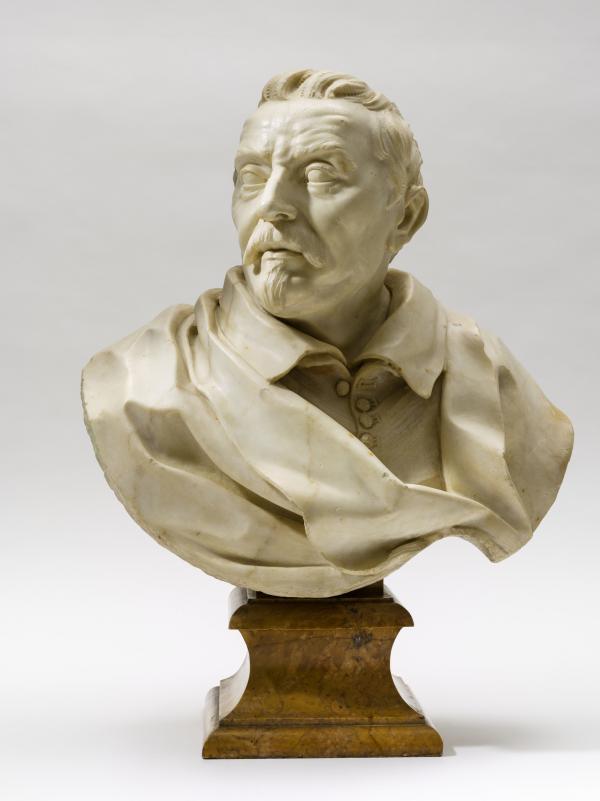Along with Donatello, Michelangelo, and Canova, Bernini is one of the key artists who defined the course of sculpture in Italy. His name, associated not only with sculpture but also with architecture and urban planning, has become the emblem of the Roman Baroque. Many of Bernini's patrons requested to have their portraits done by the artist, a genre in which he excelled as no other artist could surpass him in rendering their sitters' expressions, the texture of their flesh, or the details of their costumes. Although his models were eager to have their likenesses convey their power and social status, Bernini also represented them as individuals. The sitter depicted in Portrait of a Man has not yet been identified. He appears to be of a sufficiently advanced age for time to have left its marks: the skin near his eyes has lost its elasticity, and his hair is receding. Perhaps a close friend of the artist, he is informally dressed, a button of his shirt casually undone. The portrait belongs to the artist's late period, probably around 1670. Its broad execution, particularly in the somewhat simplified treatment of the draperies, confers the bust a troubling immediacy.
View Bernini's Portrait of a Man in the Ahmanson Building, Level 3



